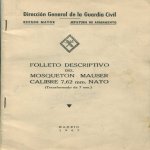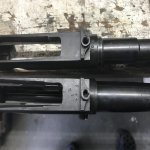p.Rundle
CGN frequent flyer
Hey folks, so I've been seeing a ton of M96 Mausers chambered in .30-06 (and 8x57) recently. I did some research, and saw a variety of people saying that the actions were too weak for the cartridge, or too short, and to just not do it. They claim that the rifles will blow up eventually, and they are not made for a steady diet of the higher PSI of .30-06 than 6.5x55. This seems odd to me because I've also seen a lot of 1893 Mausers (the M1916 carbines) rechambered to 7.62x51. Maybe that's crazy too?
Obviously they aren't as rugged as a large ring 98, but are they that much weaker? Seems weird that so many professional gunsmiths would convert guns to an unsafe caliber. Have there been any changes in peoples perceptions since the last posts I saw on this in like 2012? I am no expert on small rings, so it would be good to learn a bit more from the folks on here. Any input is appreciated.
Obviously they aren't as rugged as a large ring 98, but are they that much weaker? Seems weird that so many professional gunsmiths would convert guns to an unsafe caliber. Have there been any changes in peoples perceptions since the last posts I saw on this in like 2012? I am no expert on small rings, so it would be good to learn a bit more from the folks on here. Any input is appreciated.










































































